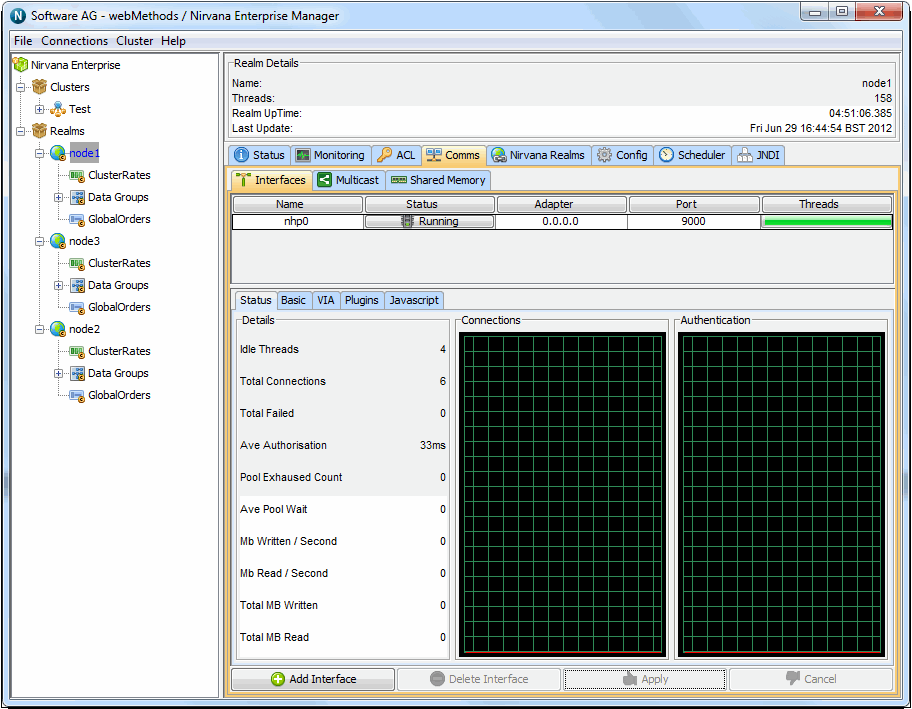Universal Messaging Enterprise Manager Comms: TCP Interfaces, IP Multicast and SHM
Using Enterprise Manager, you can configure communication mechanisms including TCP Interfaces, IP Multicast and Shared Memory (SHM):
TCP Interfaces
Interfaces within a Universal Messaging Realm Server define a protocol, a network interface and a port number. When a Universal Messaging client connects to a realm using an RNAME, they are actually connecting to an Interface that has been created on the Universal Messaging Realm.
If a machine that is running a Universal Messaging Realm has multiple physical network interfaces, with different IP addresses, it is possible to bind specific protocols to specific ports. This way you are able to segment incoming network traffic to specific clients.
For example, if a realm is running on a machine that has an external internet facing network interface, as well as an internal interface, you can create a Universal Messaging interface that uses nhp or nhps on port 80 or 443 respectively using the external facing interface.
If on the other hand when there are multiple network interfaces, and you do not wish to segment network traffic for specific protocols, you can specify to bind to all known network interfaces to the specified protocol and port.
The default realm setting when you first install Universal Messaging creates a Universal Messaging Socket Protocol Interface that binds to port 9000, on all known network interfaces.
Once this basic understanding of Universal Messaging interfaces is understood, you can then set about performing a number of operations using the Universal Messaging Enterprise Manager:
IP Multicast
Shared Memory (SHM)

